The cryptocurrency ETF market has undergone a seismic shift in 2025, fuelled by regulatory breakthroughs, institutional adoption, and a maturing investor base. As soon as considered as speculative and fringe, crypto ETFs—significantly spot Bitcoin ETFs—have turn out to be a central asset class for each conventional traders and digital-native portfolios.
With over $120 billion in belongings beneath administration (AUM) and large inflows in simply over a yr, crypto ETFs have emerged as one of many greatest monetary tales of the last decade. However what’s actually behind the growth? And what does it imply for the worth of Bitcoin, Ethereum, and the broader digital asset market?
A Snapshot of Crypto ETF Panorama in 2025
The rise of spot Bitcoin ETFs over the previous 18 months has been staggering in each scale and velocity. BlackRock’s iShares Bitcoin Belief (IBIT) at present holds the highest place with an AUM of over $76 billion, intently adopted by Constancy’s FBTC, which has an AUM of roughly $20 billion. Grayscale’s GBTC, regardless of its excessive 1.5% administration payment, retains over $18 billion however has seen declining each day inflows on account of aggressive stress. In the meantime, low-fee entrants like Bitwise BITB and VanEck’s HODL are quickly gaining traction with retail traders searching for cost-efficient publicity.
Every day inflows provide a good clearer image of the momentum behind these funds. On July 17, 2025 alone, IBIT introduced in practically $395 million in new capital—greater than the complete weekly influx of the most important bond ETF on the time. In distinction, Constancy’s FBTC noticed zero influx that day, which analysts attributed to a quick custody adjustment. Bitwise, Grayscale, VanEck and different companies recorded inflows starting from $7 to $13 million, demonstrating constant investor curiosity that extends past the 2 market leaders.
For extra: 8 Greatest Bitcoin ETFs to Purchase Proper Now
ETF CategoryYTD Inflows ($B)Common Return (%)Spot Bitcoin ETFs74.2+52.5Ethereum ETFs11.3+46.2Crypto Baskets (Prime 10)4.9+41.8Blockchain Fairness ETFs7.7+22.4
Though Bitcoin stays the dominant asset, 2025 has seen the emergence of Ethereum ETFs, that are following an analogous trajectory. Constancy and ARK 21Shares launched spot ETH ETFs in Q2, rapidly gathering $3.5 billion in AUM inside the first three months. These funds, with common returns above 46%, are positioning Ethereum because the second pillar of institutional crypto adoption.
With Ethereum ETFs holding actual ETH in custody, the identical provide compression dynamics seen in Bitcoin are beginning to take form. Moreover, Ethereum’s staking yield—at present round 3.8% yearly—offers ETH a novel enchantment as a yield-bearing asset, which isn’t straight mirrored in ETF merchandise however contributes to long-term investor confidence.
Past single-asset funds, multi-asset crypto ETFs are starting to achieve traction, providing publicity to a basket of prime digital belongings like Bitcoin, Ethereum, and Solana. Whereas these stay a small share of the market with lower than $5 billion AUM, they characterize a future development phase as traders search for diversified crypto publicity.
The surge in crypto ETF adoption just isn’t merely a retail phenomenon. Institutional capital now dominates crypto ETF inflows. Pension funds, hedge funds, and wealth managers are allocating to ETFs as a result of they provide compliance with present regulatory frameworks, audited custodianship, and seamless integration with conventional brokerage methods.
For extra: The Influence of Bitcoin ETFs on BTC Worth – Actual Information Evaluation
Key Drivers Behind the 2025 Crypto ETF Growth
Regulatory Readability Opens the Doorways
The only most essential driver has been regulatory approval. After years of pushback, the SEC greenlit the primary spot Bitcoin ETFs in January 2024. These ETFs maintain precise BTC, not like the futures-based funds that struggled with roll prices and monitoring errors.
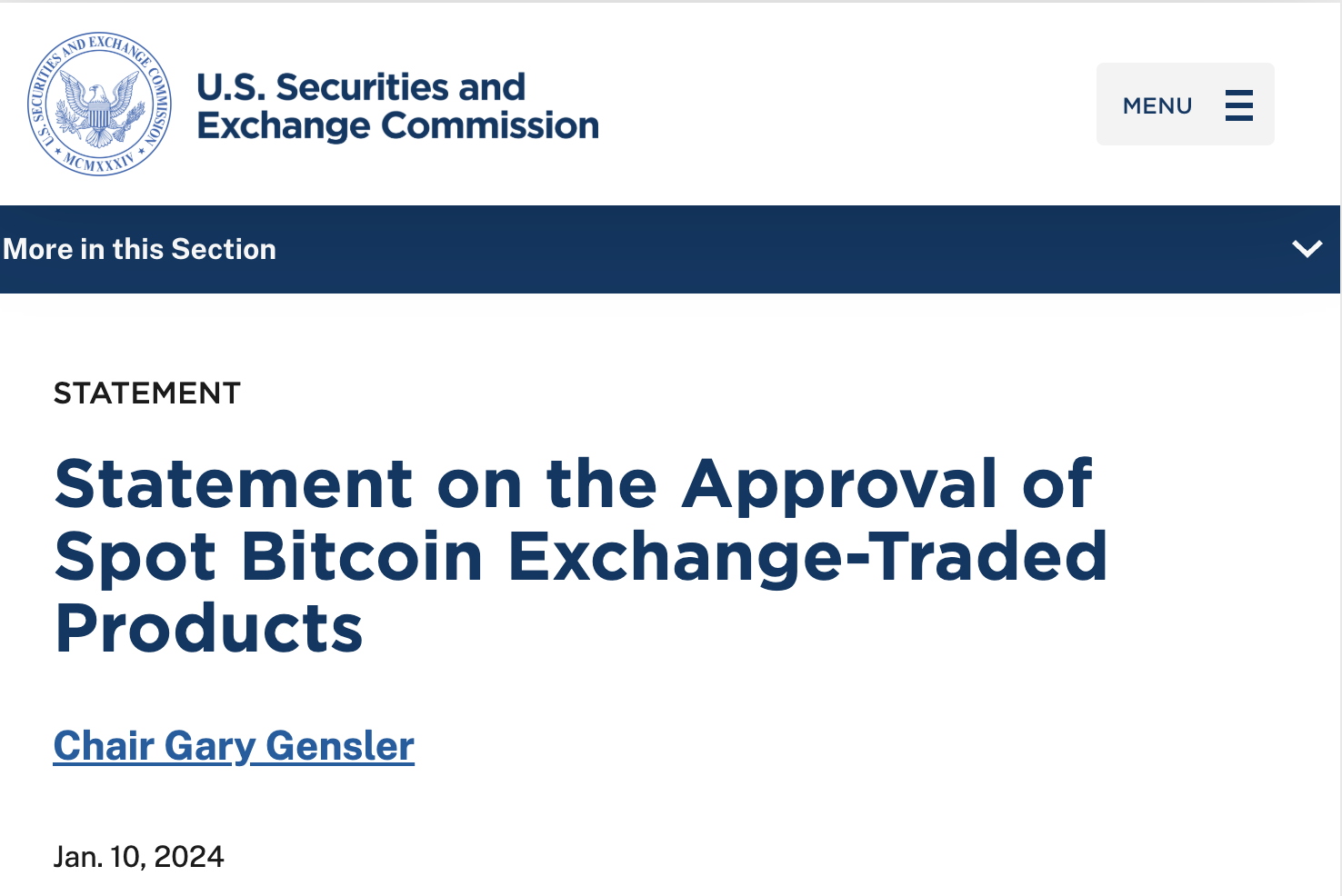
Supply: SEC
Following the U.S. lead, Singapore, the UK, and Switzerland have additionally moved ahead with frameworks for regulated crypto ETFs. This wave of worldwide approval has legitimized digital belongings as a core funding class.
Spot crypto ETFs now function the first entry level for establishments, bypassing the necessity for direct custody or offshore crypto exchanges.


Institutional Flows Gas Worth and Demand
Institutional traders—as soon as skeptical of crypto—have begun embracing ETFs as a compliant, liquid, and clear entry level.
In simply 18 months, spot Bitcoin ETFs have absorbed greater than 300,000 BTC, representing over 1.5% of complete BTC provide. Main inflows have come from:
Registered Funding Advisors (RIAs)Company treasuriesPension and sovereign funds401(ok) platforms (by way of permitted brokerages)
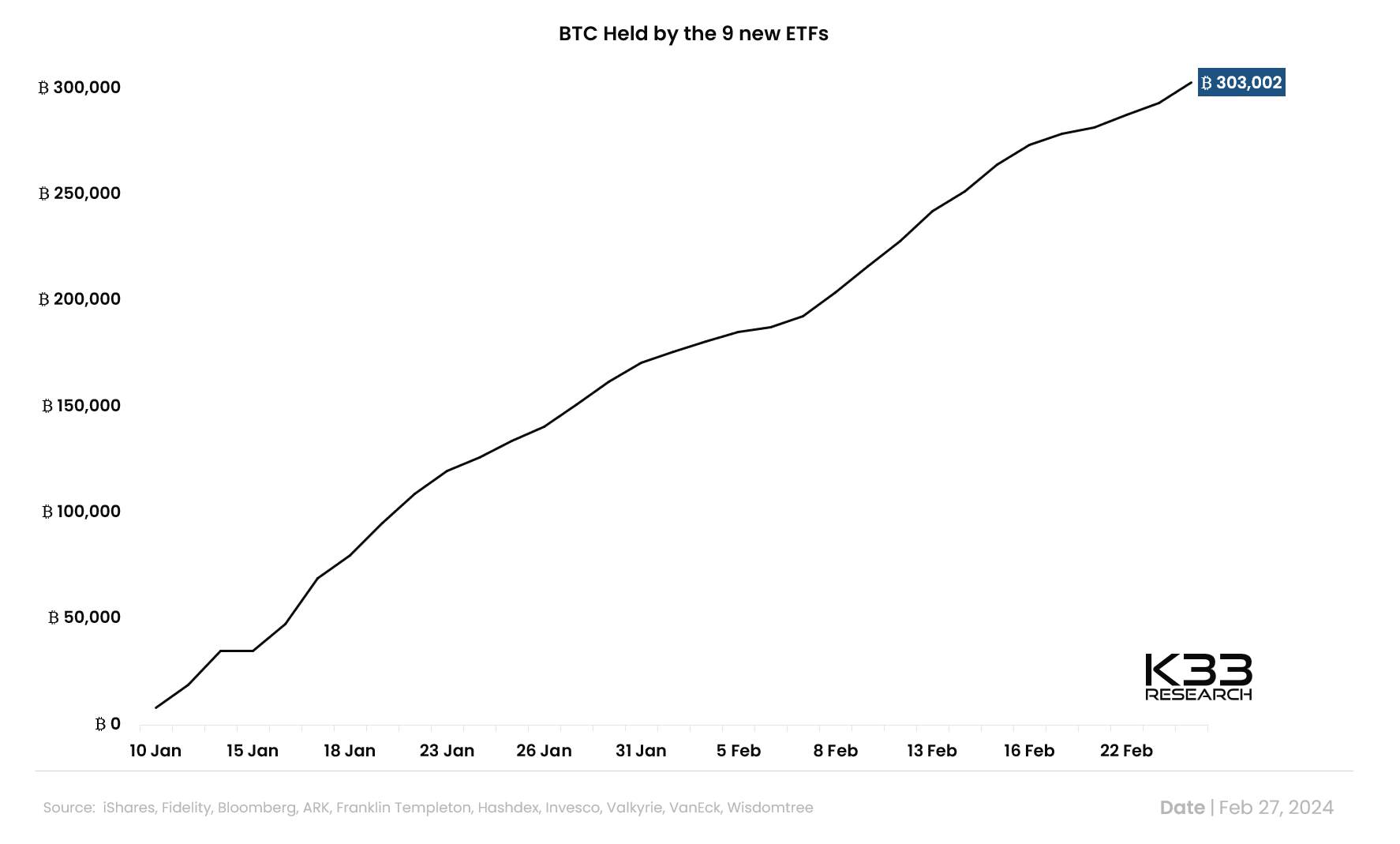

Supply: K33 Analysis
These inflows should not short-term speculative bets however are more and more a part of long-term strategic allocations. In accordance with JPMorgan’s Q2 2025 crypto report, ETF-driven demand accounted for practically half of Bitcoin’s worth appreciation within the first half of 2025.
Retail Reawakens, However Extra Educated
Retail participation has additionally rebounded, however with extra sophistication. In contrast to the 2021 bull run, traders in 2025 will favour regulated ETF automobiles over high-risk tokens.
Platforms like Robinhood, SoFi, and Constancy have built-in Bitcoin and Ethereum ETFs into their tax-advantaged accounts, making crypto publicity as accessible as shopping for an S&P 500 ETF.
Bitwise’s BITB, recognized for publishing real-time BTC pockets holdings and proof-of-reserves, has attracted youthful traders who demand transparency and blockchain-native accountability.
Bitcoin ETF Mechanics Create a Provide Squeeze
The operational design of spot Bitcoin ETFs contributes to supply-side stress. Every time an investor buys ETF shares, the fund should purchase precise Bitcoin—eradicating it from circulation and locking it into chilly storage.
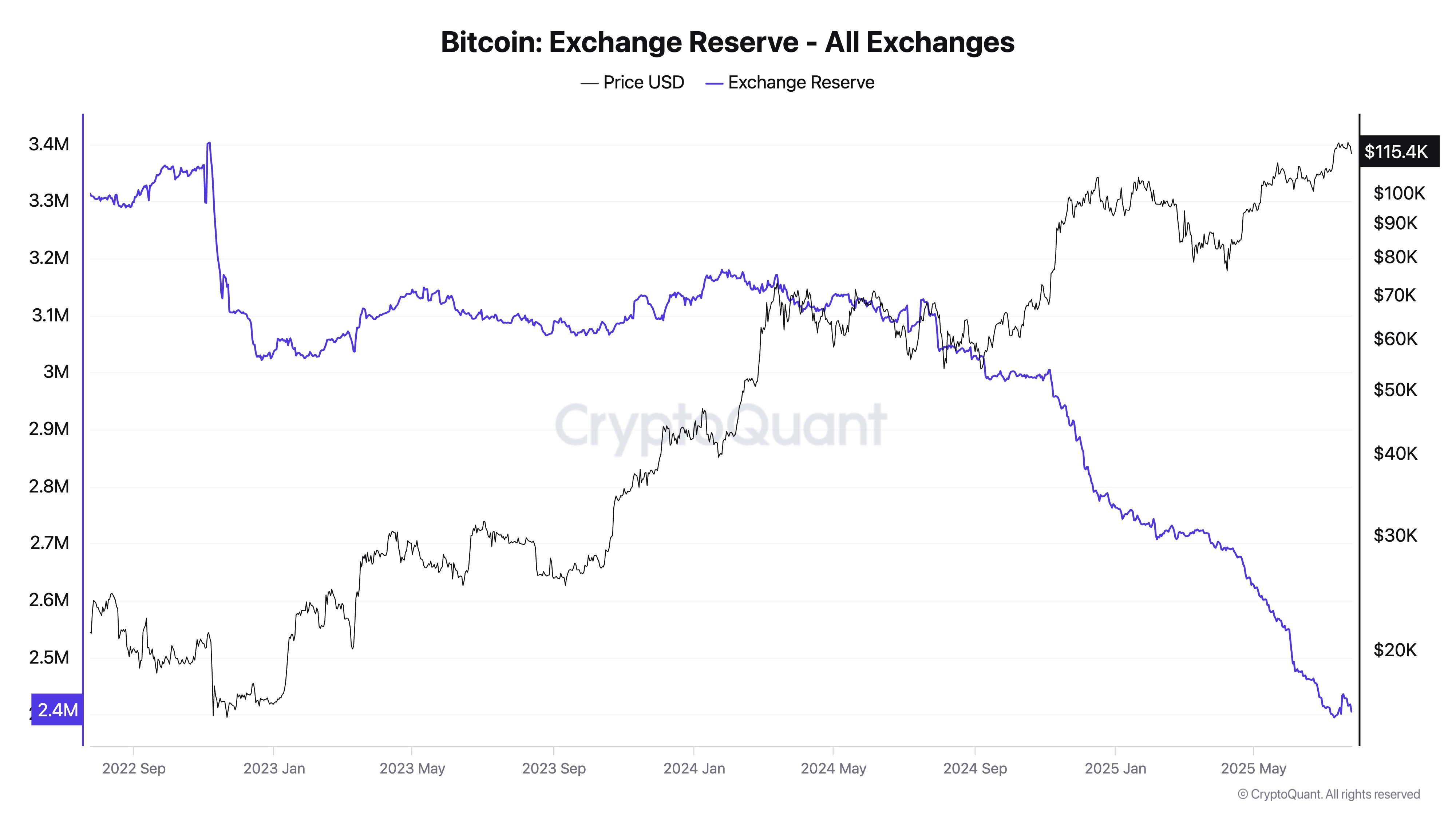

Supply: CryptoQuant
As these ETFs scale, the accessible float of BTC on public exchanges shrinks. This tight provide dynamic helps upward worth momentum and reduces volatility attributable to short-term speculators.
Through the April 2025 market correction, whereas altcoins dropped sharply, spot Bitcoin ETFs continued to see inflows, indicating the rising function of those automobiles as stabilizers within the crypto ecosystem.
For extra: Bitcoin ETFs Attain All-Time Excessive with Over $41 Billion in Inflows
Dissecting Return Effectivity and Payment Dynamics
ETF traders in 2025 are extra fee-sensitive and performance-focused than in earlier cycles. That has made payment construction a vital aggressive differentiator. BlackRock’s IBIT prices a modest 0.12%, whereas Bitwise’s BITB holds at 0.20%. In distinction, Grayscale GBTC continues to cost a 1.5% annual payment, a legacy from its pre-ETF construction.
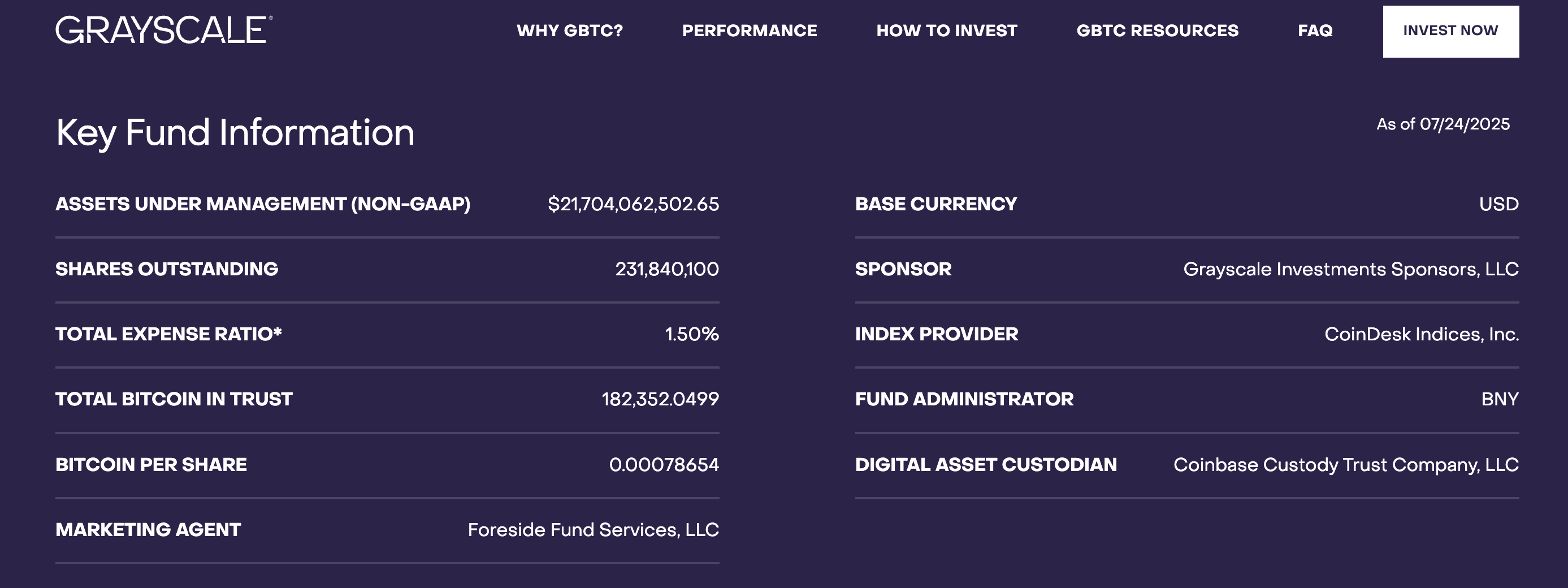

When measured when it comes to return-to-fee effectivity, the variations are stark. IBIT, with a 12-month return of 54.5% and a payment of 0.12%, provides over 450 items of return for each 1% in charges. GBTC, by comparability, provides simply 32 items per 1% payment. This ratio helps clarify why GBTC, regardless of its dimension, has skilled persistent outflows since changing to an ETF.
Ethereum ETFs, although newer, are anticipated to face related scrutiny. As these merchandise mature and compete for inflows, traders will more and more demand real-time transparency, decrease charges, and integration with staking or yield-generating mechanisms—options at present missing in most ETH ETFs.
Analyzing ETF Affect on Worth Formation
ETF inflows are now not passive. They actively form worth path and investor habits. Up to now, Bitcoin’s worth was closely influenced by sentiment cycles on crypto-native platforms. In 2025, capital flows from ETFs have taken the lead.
A compelling evaluation from Amberdata’s July 11, 2025 report titled “Spot ETFs: The Basis of the Present Bull Run” underscores the structural significance of those inflows. In accordance with Amberdata, spot Bitcoin ETFs at the moment are main market movers, persistently supporting upward worth momentum by cumulative inflows that tighten provide and improve liquidity uncertainty. Structural demand from ETF capital flows now operates independently of sentiment swings, performing as a stabilizing power relatively than a speculative driver.
Ethereum is following an analogous path. Whereas nonetheless extra unstable than Bitcoin, ETH is stabilizing as ETF inflows deepen. The presence of Ethereum ETFs on institutional platforms has additionally decreased the dominance of offshore exchanges and elevated the significance of regulated U.S. custodians.
A Structural Shift in Investor Demographics
The 2025 ETF growth has introduced new contributors into the crypto ecosystem. Registered funding advisors (RIAs), pension funds, and household workplaces—beforehand hesitant to interact with crypto exchanges—now allocate to Bitcoin and Ethereum by ETF wrappers. For instance, over 60% of latest ETF inflows in Q2 2025 got here from managed portfolios and retirement accounts. These traders should not on the lookout for 10x good points. They’re concentrating on low-volatility, inflation-resistant, diversifying belongings—and they’re doing so by regulated constructions.
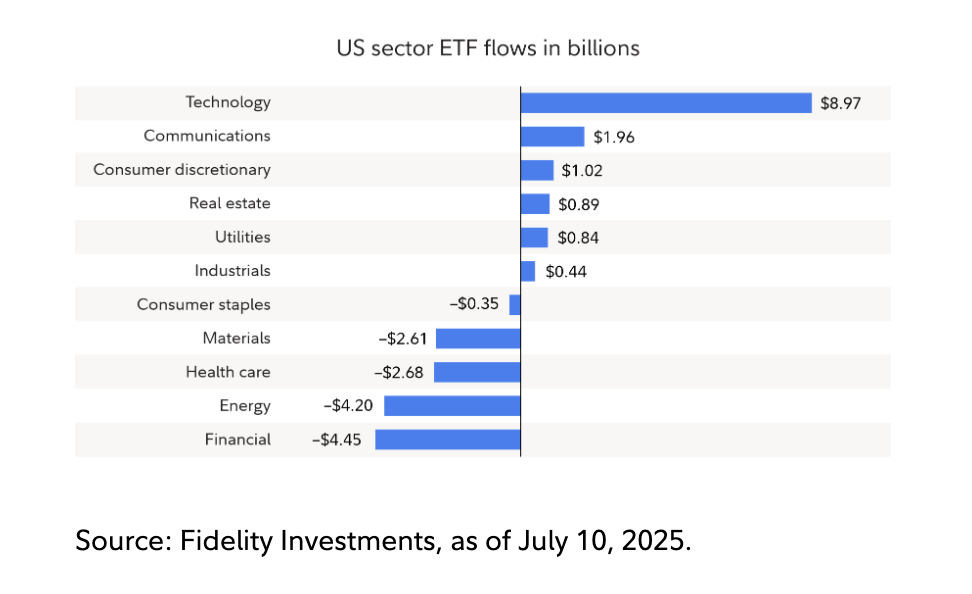

Retail habits has additionally shifted. As talked about above, platforms like Robinhood, Charles Schwab, and SoFi now provide Bitcoin and Ethereum ETFs alongside fairness and bond funds, permitting youthful traders so as to add crypto publicity with out venturing into unregulated markets. This normalization of entry is increasing crypto’s footprint throughout generational and institutional strains.
Crypto ETF Challenges and Issues
The emergence of crypto ETFs has precipitated a blurring of boundaries between conventional finance (TradFi) and the realm of digital belongings. For institutional traders, ETFs provide a solution to acquire publicity to crypto with out the dangers of self-custody, non-public keys, or unregulated exchanges. ETFs present the crypto ecosystem with capital stability and introduce new sources of demand that have been beforehand absent.
Regardless of their success, crypto ETFs face challenges that would form their long-term evolution. One situation is the focus of custody. Most main Bitcoin ETFs use Coinbase Custody (Prime or Belief) or Constancy Digital Belongings Companies as custodians, elevating questions on systemic threat. One other problem lies in payment constructions, as competitors is forcing issuers to compress prices additional, doubtlessly lowering margins for ETF suppliers.
There may be additionally an ongoing debate inside the crypto group about whether or not ETFs undermine Bitcoin’s decentralized ethos. By concentrating possession in giant, regulated entities, ETFs might shift governance affect away from particular person holders.
For extra: Altcoin ETFs After Solana – XRP, ADA, AVAX Subsequent in Line
The ETF-Led Transformation of Crypto
The growth in crypto ETFs throughout 2025 isn’t only a development—it marks a everlasting change in how digital belongings are purchased, held, and priced. These automobiles have turn out to be gateways for These embrace critical capital, instruments for retirement planning, and constructing blocks for long-term portfolio building.
The system now contains Bitcoin and Ethereum. They’re reshaping crypto and conventional finance from the within out by way of ETFs.
The query now just isn’t whether or not crypto ETFs will succeed. It’s how far their affect will attain—and what comes subsequent in a market that’s lastly discovered its bridge between code and capital.








